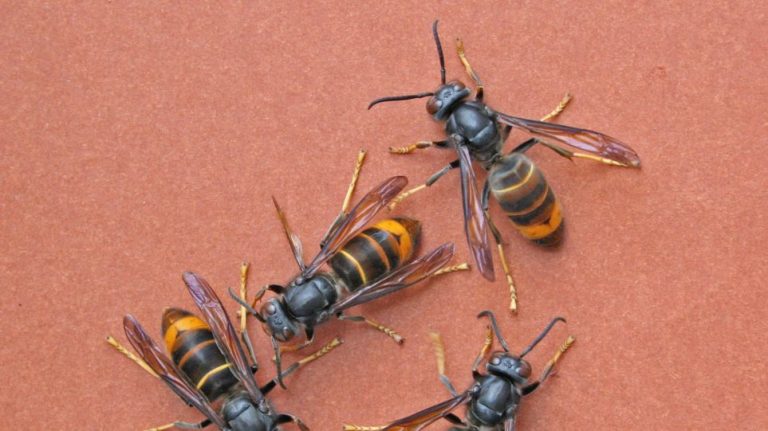The scientist tasked with vacuuming up a nest of “murder hornets” has said that he feared permanent nerve damage from squirted venom over their toxic stinger.
Chris Looney, an entomologist with the Washington state department of agriculture, told The Guardian: “I was more worried about getting permanent nerve damage in the eye from the squirted venom than being stung.
“They are pretty intimidating, even for an inch-and-a-half insect. They are big and loud and I know it would hurt very badly if I get stung. They give me the willies,” he added.
Asian giant hornets have a long, toxic stinger that can cause renal failure and death. Dozens of people in Japan have been killed in this way.
However, they can also squirt venom, something that Mr Looney experienced when captured hornets sprayed his lab bench.
Mr Looney and his colleagues from the WSDA located the first nest on US soil by attaching a tracking device to a previously captured worker hornet.
They tracked the worker to a tree crevice near the city of Blaine, where, donning white protective suits in the style of astronauts, Mr Looney vacuumed up the hornets, taking dozens of the insects back to his lab to be examined.
Visit the Greek island in the 100 most impressive list in the world (video)
Bee venom “kills breast cancer cells in the lab within an hour”
While a sting from a murder hornet has been described as like having a hot tack pushed into your flesh, they do not get their name from killing people.
Their main victims are actually honey bees. The hornets can decimate a colony in just a few hours, decapitating the bees and feeding their corpses to young hornets. With honey bee numbers in decline, their arrival in the Pacific northwest has caused great concern.
It is thought that the hornets arrived via ship or air on goods imported from their native East Asia into British Columbia, where they were first discovered last year.
Warmer weather may allow their spread south into California.
The destruction of this one next is a “small victory” according to Mr Looney, and containment may take several years.
Source: Independent
Ask me anything
Explore related questions





